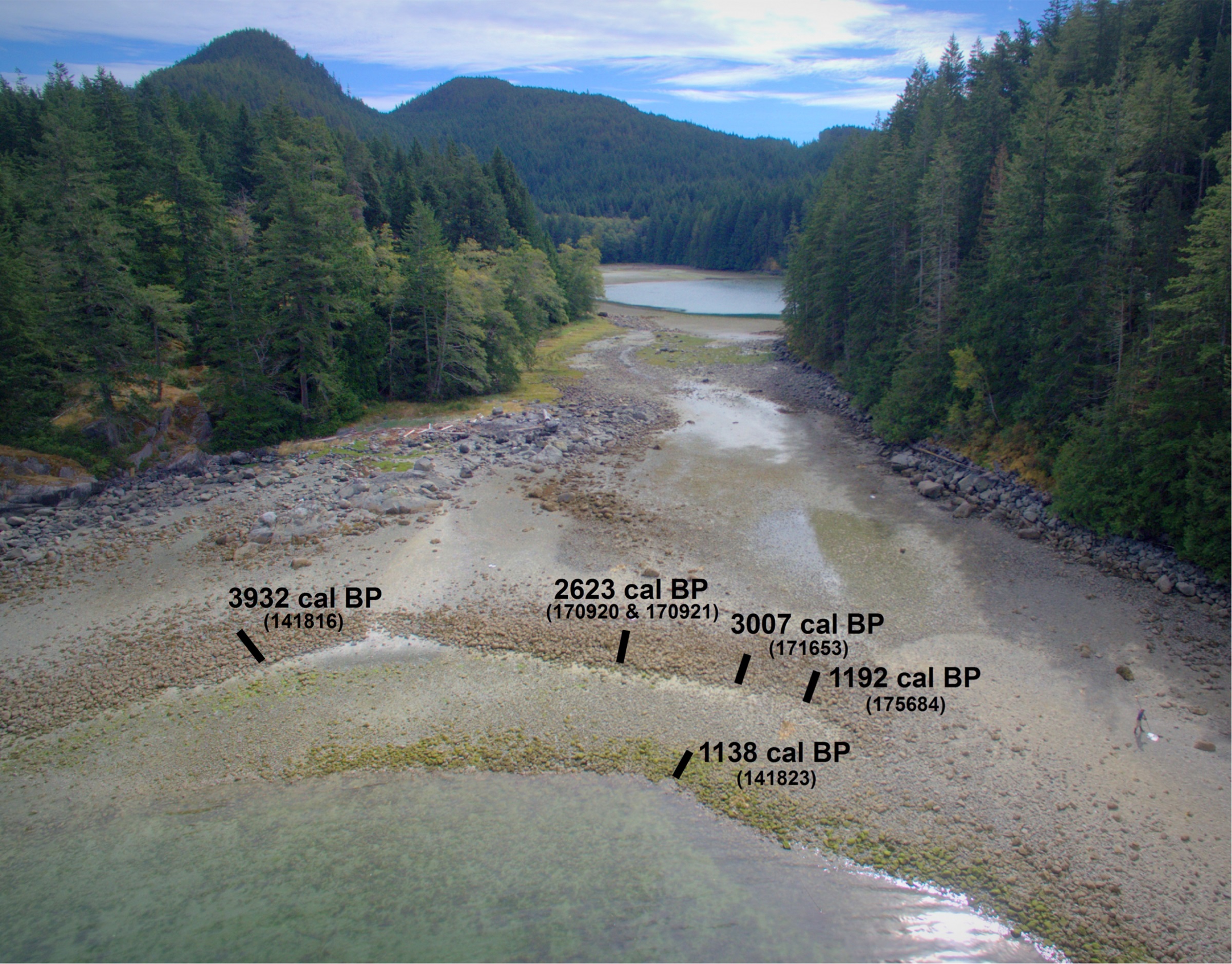 Wednesday, May 12, 2021 at 4:52PM
Wednesday, May 12, 2021 at 4:52PM 3500 years of shellfish mariculture on the Northwest Coast of North America
Nicole F. Smith, Dana Lepofsky, Ginevra Toniello, Keith Holmes, Louie Wilson, Christina M. Neudorf, and Christine Roberts
https://journals.plos.org/plosone/article?id=10.1371/journal.pone.0211194

Ancient systems of mariculture were foundations of social-ecological systems of many coastal Indigenous Peoples. However, since such systems either do not leave tangible remains in the archaeological record, and/or are hard to date, we know little about their development and use. Clam gardens, traditional mariculture features located within the intertidal zone along the Northwest Coast of North America, are composed of a rock wall positioned at the low tide mark and a flattened terrace on the landward side of the wall. Because these features are largely composed of rock and sediment, and have complex formation histories, they can be difficult to age. On northern Quadra Island, British Columbia, we identify three variations in clam garden form, constructed in different geomorphological settings, each of which require different sampling approaches to obtain ages on construction and ongoing use. To age the clam gardens, we consider radiocarbon dating of invertebrates that inhabit beach deposits (both pre- and post-garden construction), and the relationship of the gardens and clam samples to the local sea level history and taphonomic processes. Within our study area, we find clam gardens have been in use for 3500 years, likely corresponding to other social and ecological changes of the time. These data allow us to formulate guidelines on samples most suitable to constrain the age of initial and on-going wall construction and use of clam gardens, which can be extrapolated to dating other ancient mariculture features in other regions. Such dating programs are the foundation for understanding the long-term development of traditional marine management practices and how they are situated in broader social-ecological systems.
Reader Comments